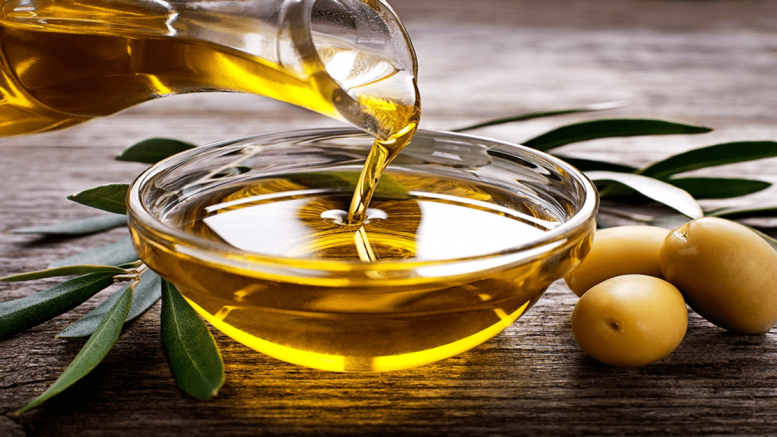“We realized the opportunity to plant olive trees by influence of the cultivation in Uruguay, which at the time was expanding quickly.”

Fernando Rotondo, owner of OlivoPampa
Fernando Rotondo is an agronomist from Universidad Nacional Agraria “La Molina” of Peru, master in international management and a specialist in olive farming by the Instituto Andaluz de Investigación y Formación Agraria, Pesquera, Alimentaria y de la Producción Ecológica, from Spain.
Rotondo is the head of OlivoPampa, a Brazilian family-owned company that produces premium quality table olives and extra virgin olive oil in the city of Sant’Ana do Livramento, State of Rio Grande do Sul.
AgriBrasilis – Brazil has no history of olive cultivation. What led you to decide to cultivate in the State Rio Grande do Sul?
Fernando Rotondo – We saw the opportunity to plant olive trees by influence of the cultivation in Uruguay, which at the time (2004-2005) was expanding quickly. This was a few years before we started planting in Brazil.
The similarity of the climate in the border area of Rio Grande do Sul State with several parts of Uruguay was an indicator of the viability of olive farming here on the 31st parallel south. In addition, the region is an important wine-growing area with very valuable information generated about hours of light, amount of hours of cold temperature (below 12 degrees Celsius), heat in the summer, temperature range, etc. We also detected at that time some pioneers in the Caçapava and Cachoeira do Sul region.
AgriBrasilis – What climate and soil characteristics are necessary for proper development of olive trees?
Fernando Rotondo – Mainly accumulation of cold hours below 12 degrees Celsius and well-defined seasons, as well as no rainfall during the harvest period and thermal amplitude (temperature difference between day and night).
However, not everything is good: a negative factor that we have here in the region is some years with late frosts in the spring. The frost burns the blooming plants. In addition, sometimes we have too much rainfall in the summer, which increases the incidence of diseases and pests.
AgriBrasilis Out of the total cultivated area, what is the proportion for olive oil production and how much is for canned consumption (table olives)?
Fernando Rotondo – Approximately 30% of OlivoPampa’s olive trees have been planted with varieties suitable for table olives, among them: Manzanilla, Picual, Ascolana, etc. pointing out that these varieties are also suitable for producing excellent olive oils.

Table olives produced by OlivoPampa
Brazil is a great importer and consumer of olive oils and also a great consumer of olives.

Origin of olive oil imports from Brazil (Source: International Olive Council, based on information from the Brazilian Ministry of Development, Industry and Foreign Trade)
AgriBrasilis – What are the main pests and diseases that affect the cultivation of olive trees?
Fernando Rotondo – The olive plant is affected by several fungal diseases due to environmental humidity and temperatures in the winter and spring: anthracnose, peacock eye, emplomado, etc.
There is a need to apply products at the beginning of infestations, highlighting that there are many products for organic olive growing, which do not leave residues on the fruit.
A positive fact is that in Brazil there are none of the important epidemic diseases and pests that occur in the producing regions: olive fruit fly, tuberculosis, etc. Therefore, this is not a limiting factor in Brazil.
AgriBrasilis – What are the trends in the olive oil market for the coming years?
Fernando Rotondo – There is a steady trend towards common (classic) olive oils, often mislabeled, and the premium segment is growing, which focuses on an audience of quality and healthy food lovers. There is plenty of room to develop a sector strategy centered around consumer education. The premium segment is new to the olive oil world, including in traditionally producing countries.
AgriBrasilis – Why is the olive oil from Brazil being so highly awarded and appreciated?
Fernando Rotondo – In my point of view, some of the new Brazilian olive growers have joined the premium segment to distinguish themselves from the common low-quality types of olive oil, also called classic. These olive oils arrive in Brazil mislabeled or on the edge of the classification between virgin (with some defect) and extra virgin (without defect).
There was a tendency to learn from world leaders in the segment in several countries and willingness to test the quality of Brazilian products in international competitions, but we are still producing low volume. These differentiated farmers produce great olives that are healthy, harvested early (fruit more green than ripe), but with low oil production. This is also a quality-oriented trend in the world that is not very old, having started in the 80s.
Compared to ordinary, classic olive oils, good olive oil from an early harvest, suitable and well produced, is expensive. Consequently, the initial market focus for olive oil in Brazil is on lovers of gastronomy and of healthier food.

READ MORE:

